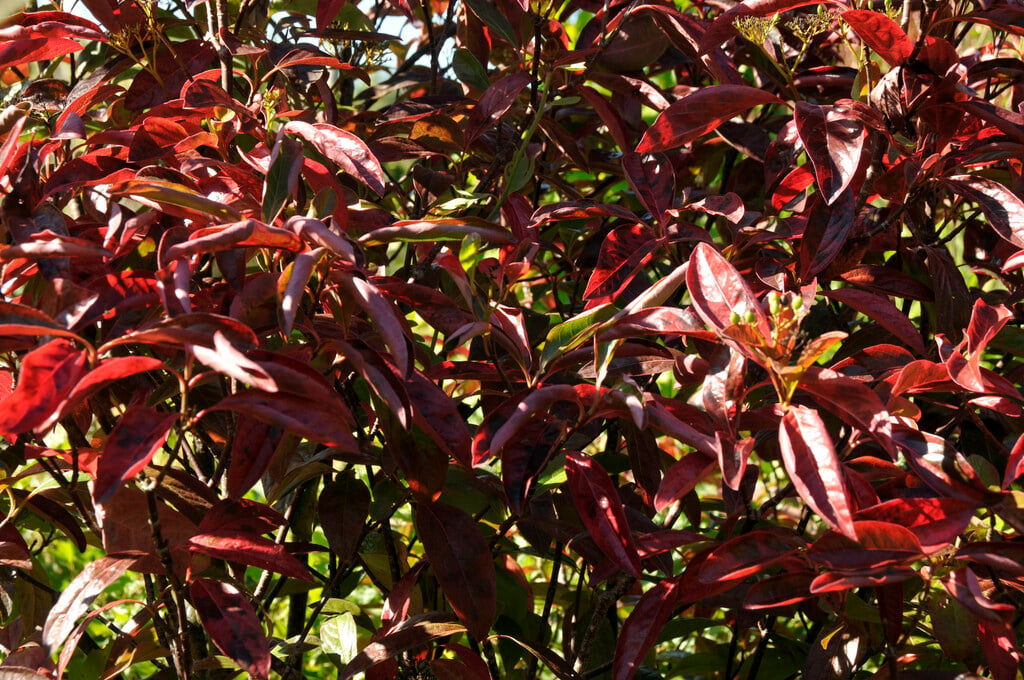Viburnum nudum 'Winterthur'
viburnum 'Winterthur'
A deciduous shrub, to around 2.5m high, with a rounded habit and glossy, olive green leaves that turn rich shades of red and purple in autumn. Dome-shaped clusters of tiny, creamy white flowers are produced in late spring or early summer, followed by clusters of berries that ripen to pink and then to blue-black

Size
Ultimate height
1.5–2.5 metresTime to ultimate height
5–10 yearsUltimate spread
1.5–2.5 metresGrowing conditions
Moisture
Moist but well–drained, Poorly–drainedpH
Acid, NeutralColour & scent
| Stem | Flower | Foliage | Fruit | |
| Spring | Cream White | Green | ||
|---|---|---|---|---|
| Summer | Cream White | Green | ||
| Autumn | Green Red Purple | Pink Blue Black | ||
| Winter |
Position
- Full sun
- Partial shade
Aspect
East–facing or South–facing or West–facing
Exposure
Exposed or Sheltered Hardiness
H6Botanical details
- Family
- Viburnaceae
- Native to GB / Ireland
- No
- Foliage
- Deciduous
- Habit
- Bushy
- Potentially harmful
- Fruit are ornamental - not to be eaten. Wear gloves and other protective equipment when handling. Pets: Fruit are ornamental, not to be eaten - see the HTA guide to potentially harmful plants for further information and useful contact numbers
- Genus
Viburnum can be deciduous or evergreen shrubs with opposite, simple or palmately lobed leaves and clusters of small, often fragrant white or pink flowers, followed by red, blue or black berries
- Name status
Unresolved
How to grow
Cultivation
Thrives in acid to neutral, fertile soil in sun or part shade. This species prefers moist soil and tolerates some waterlogging.
Propagation
Propagate by softwood cuttings in summer
Suggested planting locations and garden types
- City and courtyard gardens
- Cottage and informal garden
- Wildlife gardens
- Low Maintenance
- Flower borders and beds
Pruning
Pests
May be susceptible to aphids and viburnum beetle
Diseases
May be susceptible to Phytophthora, honey fungus, grey moulds and leaf spot
Get involved
The RHS is the UK’s gardening charity, helping people and plants to grow - nurturing a healthier, happier world, one person and one plant at a time.